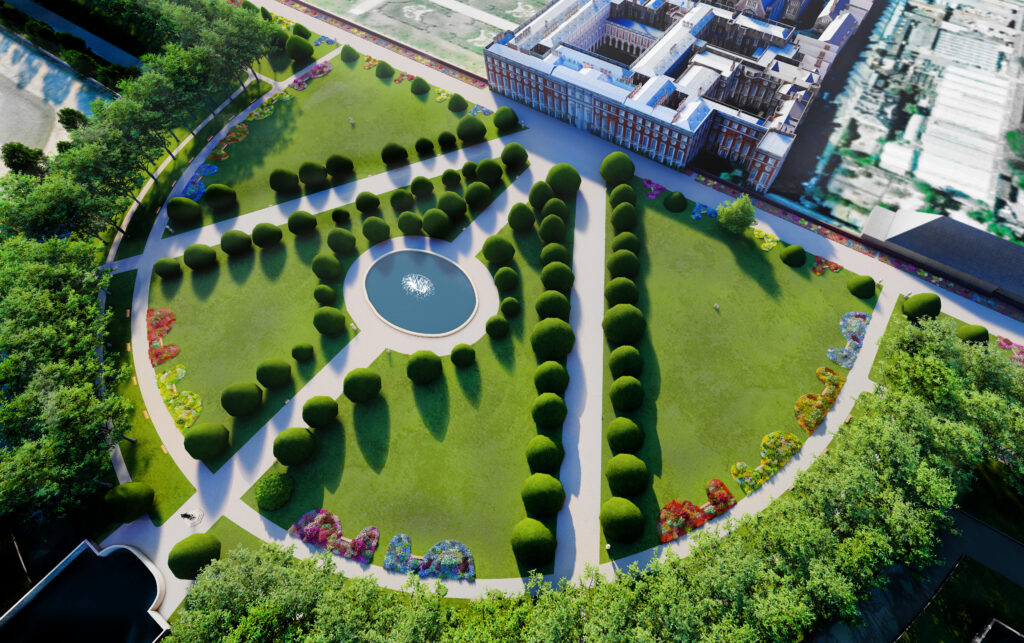
A new, sustainable planting scheme is being introduced for the area which is best known for its mushroom shaped Yew trees.
The Great Fountain Garden was first laid out between 1689 and 1696 by King William III and Queen Mary II.
It was designed in the formal Anglo-Dutch style before being simplified and changed under Queen Anne and Queen Victoria.
The new design introduces 32 planting beds and borders across 1.5 acres, featuring nearly 300 species.
They’ve all been selected for their climate resilience, biodiversity value and long seasons of interest.
Award-winning garden designer, Ann-Marie Powell, said: “Designing for the Great Fountain Garden is both an honour and a thrilling challenge. This space has been shaped by centuries of royal vision—from formal Anglo-Dutch elegance to exuberant Victorian colour—and now, we’re adding a new layer: one that speaks to the future as much as the past. Our design is about reimagining beauty through the lens of sustainability, resilience, and biodiversity. We’re not just planting for visual impact—we’re planting for pollinators, for changing weather, for longevity. Every plant has a purpose and a place.
“This isn’t just about making something beautiful—it’s about creating a living, breathing landscape that connects people to the natural world, evokes the history beneath their feet, and inspires new ways of thinking about gardens today. It’s our hope that everyone who walks through this space will find something that speaks to them—whether it’s a plant they recognise, a bee at work, or just a moment of wonder.”
Alex Wigley, Head of Parks and Gardens at Historic Royal Palaces said: “This garden honours centuries of Royal horticulture while setting a bold new benchmark for sustainability. We’re building it from the ground up—protecting soil, locking in carbon, and planting for resilience. With low-water requiring species and smarter layouts, it’s designed not just to endure, but to thrive—supporting biodiversity, inspiring visitors, and helping us reach our goal of being nature-positive and carbon net zero by 2050.”



